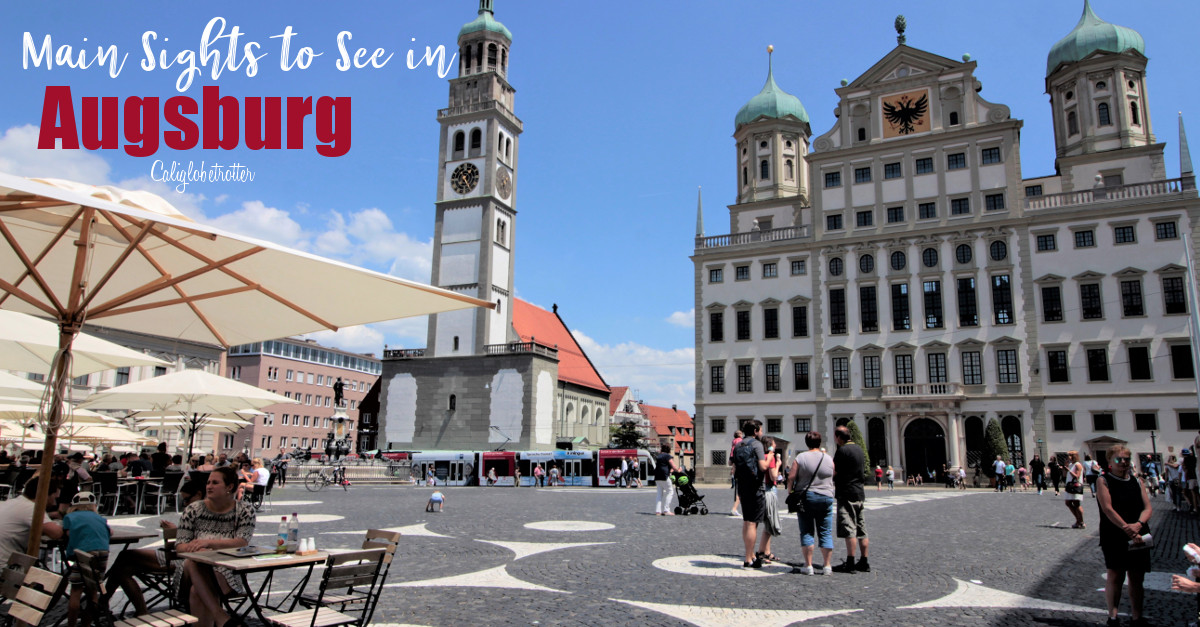
Situated at the confluence of the Lech and Wertach rivers and is Northern Swabia’s principal city, Augsburg is the third largest town in Bavaria, as well as one of the oldest. As early as 15 BC, this was the site of a Roman camp. It grew to be one of the richest towns until the Thirty Years’ War ended their prosperity. It’s also one of many towns found along the Romantic Road that runs from Würzburg to Füssen. During the Second World War, Augsburg was heavily destroyed on February 24th & 25th, 1944 and almost everything has been meticulously reconstructed to its former glory.
In case you’re interested, PIN IT FOR LATER!!
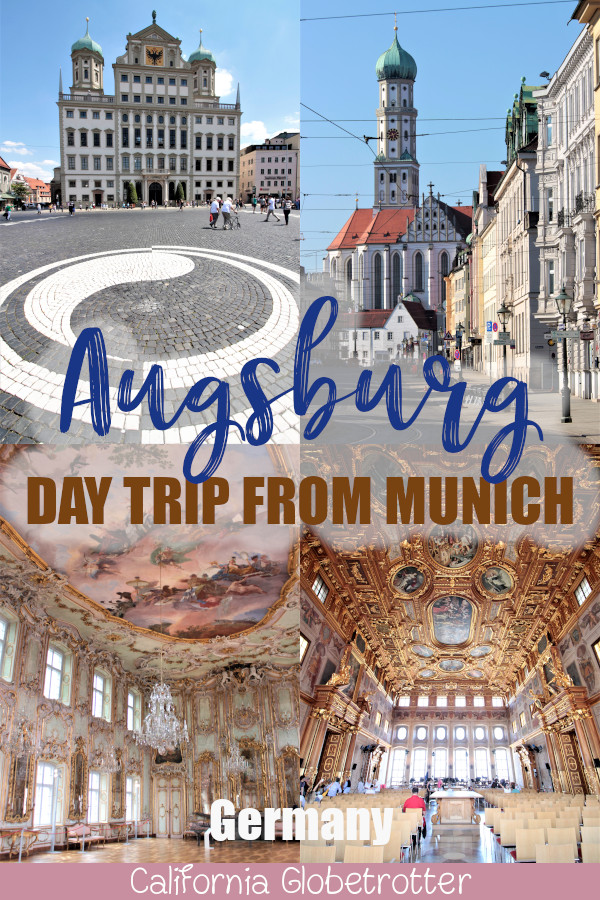
This article is now available as a mobile app. Go to GPSMyCity to download the app for GPS-assisted travel directions to the attractions featured in this article!
How to AVOID Looking Like a Tourist in Europe
STUNNING City Halls in Germany
The Most Beautiful City Halls in Europe
Augsburg is definitely one of the lesser known towns and in my opinion, doesn’t get swarmed by non-native tourists as it sits between Nuremberg and Munich with post people opting to visit both of these. As an easy day trip from Munich, there were lots of people walking around the town for shopping, enjoying the sunshine and drinking coffee outside, tour groups were every few meters apart, led by guides dressed in medieval style clothing adding a bit of flair to the city.
So, if it’s not overly popular with tourists why should you consider going? Well, let me introduce you to 10 of the most interesting sights to see in Augsburg which will tickle your interest! Most of the top things to see in Augsburg are all located along the “Imperial Mile” stretching from the the St. Ulrich’s churches at the southern end to the Augsburg Cathedral with the City Hall located in the middle.
Be sure to wander behind the City Hall for yet another impressive angle and a lovely little square void of many tourists or people in general. Always so strange how crowded a main street can be, yet just down a side alley, it’s quite.
The Augsburger City Hall & the Golden Hall
For the best starting place for your casual meandering through the town, you should begin with the City Hall (Rathaus). Built by Elias Holl between 1615-20, the city hall replaces an older 13th century wooden “Thing House” and today dominates the Rathausplatz (square) and is one of Germany’s finest examples of Mannerist architecture. You can imagine that this prestigious city hall, a combination of Renaissance and Medieval styles that eventually led to the Baroque style must have made quite the impression amongst medieval houses and quite honestly the sheer size still impresses.

Inside, you’ll find one of the most amazing halls with a splendid gold decor. It’s not called the “Golden Hall” for nothing! Located on the third floor, the Golden Hall also offers fantastic panoramic views over the Rathausplatz. The sumptuous interior with a coffered ceiling, frescoed walls and monochrome paintings highlights the importance and wealth of Augsburg. Two main portals as well as four smaller portals break up the walls. In the center of the hall is a large table, while the rest of the hall has rows and rows of chairs for visitors to sit down and enjoy the breathtaking views, or for attending a performance in the hall.


Opening Times: Monday- Sunday 10am – 6pm, closed when there are events
Price: 2,50€ per person

The Augustus Fountain
Of the three fountains located along the “Imperial Mile”, the Augustus Fountain is by far the largest and the most impressive and took 6 years to make. Named after Emperor Augustus, the fountain was installed in 1594 combining bronze and marble to give it its unique appearance. The Emperor stands atop addressing his army and interestingly, most of the figures are replicas. The originals began corroding in various place and are now on display at the Maximilian Museum.

The Imposing Perlachturm & St. Peter’s Church
The Perlachturm is a 70 meter tower directly next to the City Hall which was also built by Elias Holl in the 10th century and served as a watch tower. As it is the tallest building in Augsburg, it is endowed with fantastic views over Augsburg and the city center. But not before you climb 258 steps to the top. If you can manage it, and see a yellow flag flying on a clear day, you’ll have stunning views stretching all the way to the Alps!
The St. Peter’s Church which is barely noticeable beneath the imposing tower is actually one of the oldest buildings in Augsburg, dating back to the 11th century.

Viewing Platform: April to October 10am – 6pm (Currently closed for renovation)
Price: Adults 2 €
The Colorful Weberhaus
Make your way south along Maximilianstrasse where you will find the town’s historic Weaver’s House at Moritzplatz, across the street from St. Moritz Church. The house was built in 1389 and used as a guild hall.

The Mercury Fountain
Just opposite the Weberhaus is the Mercury Fountain which depicts the patron god of traders. He is shown wearing a winged helmet and staff entwined with snakes, typical attributes of a god of traders. Here at the intersection of Maximilianstrasse and Moritzplatz, you can find several cafes and restaurants.

St. Moritz Church
One of the oldest churches in Augsburg dating back to 1019. During the bombing of Augsburg on February 24th & 25th, the church was completely destroyed, thus loosing the beautiful interior. A quick glance inside will surprise you to see the church rebuilt, but without any of its former glory, making for an eerie experience.
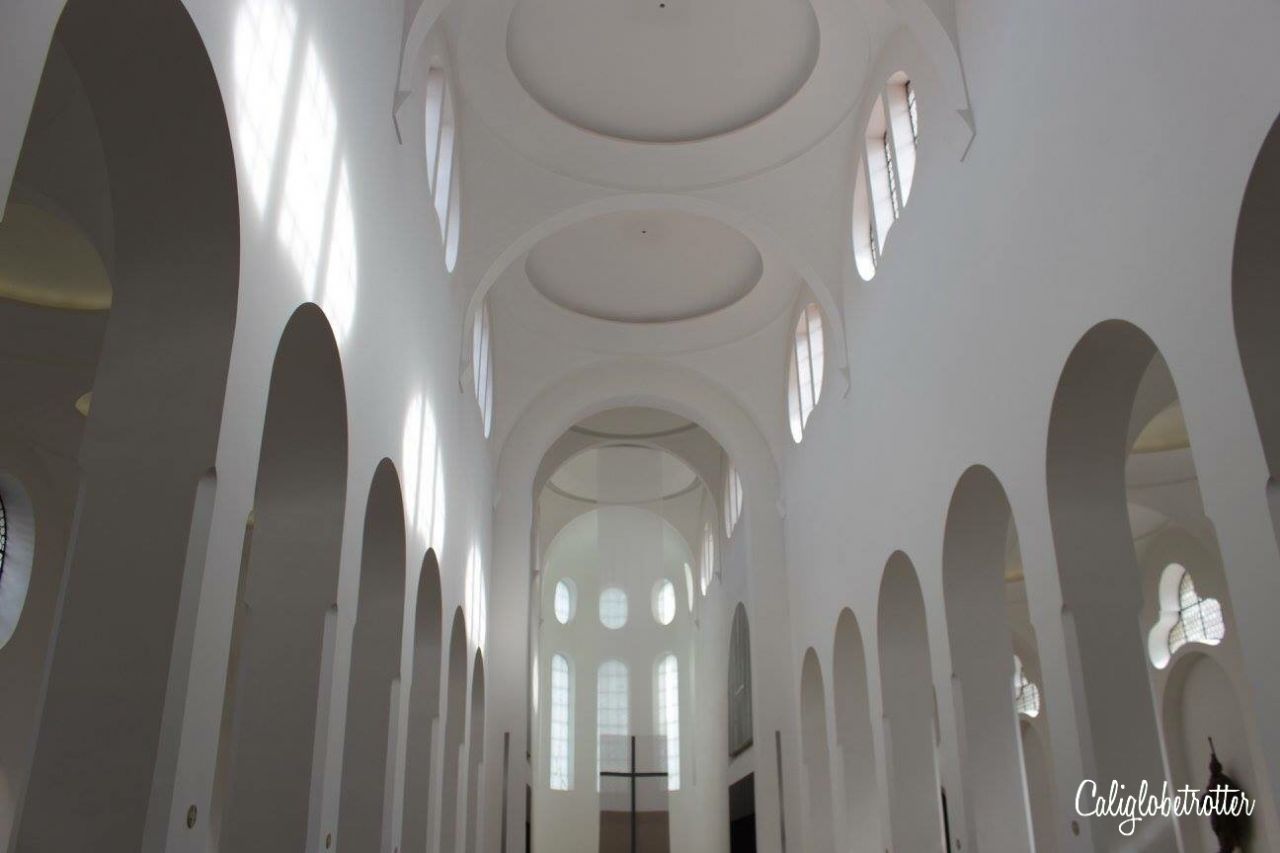
The Fuggerhäuser & the Damenhof
What was once the heart of the Imperial City, the Fugger Houses were originally bought by Jakob Fugger which were combined into the massive complex we see today. Prior to WWII, the Fuggers’ city palace was once more elegant with a copper roof and painted facade, yet after the war, it was rebuilt in a simpler form. Here, during the 16th century, the Fuggers hosted several important dignitaries such as Maximilian I and Charles V, but most notably was Martin Luther.
 Built between 1512-15 for Jacob II Fugger for him and his family, the inside has two Italian-style arcaded courtyards. When the weather is nice, the Damenhof, the lovelier of the two courtyards is open to the public and has several tables to sit and enjoy a drink. Unfortunately, again we were too early.
Built between 1512-15 for Jacob II Fugger for him and his family, the inside has two Italian-style arcaded courtyards. When the weather is nice, the Damenhof, the lovelier of the two courtyards is open to the public and has several tables to sit and enjoy a drink. Unfortunately, again we were too early.

Opening Times: 10:30am – midnight (with good weather). Closed in winter.
The Splendid Schaezler Palace
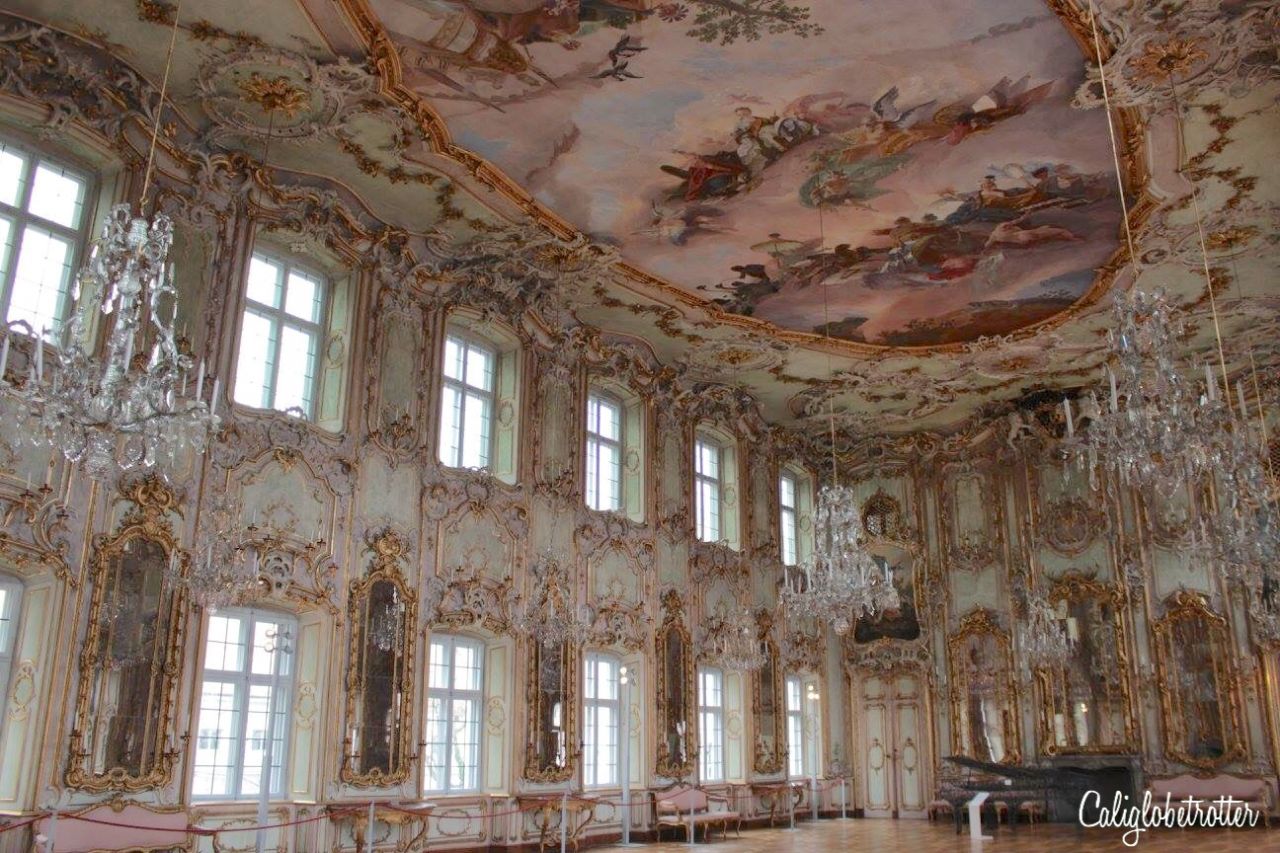

The Schaezlerpalais is a magnificent baroque palace further down along Maximilianstrasse. Immediately upon walking in, you’ll find a stunning staircase and fresco-ed ceiling. It’s one of the most important secular buildings in Augsburg and by far one of the prettiest! It is said that 14 year old Austrian Princess Maria Antonia, later Queen Marie Antoinette of France danced so much on the inauguration night of the building in 1770 that she ruined her dancing shoes.
It’s worth visiting the palace if you’re drawn to beautiful, mirrored ballrooms, which is considered to be the most artistically significant ballroom in Germany which survived the complete destruction of Augsburg during WWII. Built between 1765-1770 by Karl Albrech von Lespilliez, chief architect of the Bavarian royal court, for merchant and banker Benedikt Adam Freiherr von Liebenhofen.
Opening Times:
- Tuesday 10am – 8pm
- Wednesday – Sunday 10am – 5pm
Price: Adults 7 €, Children 3 €
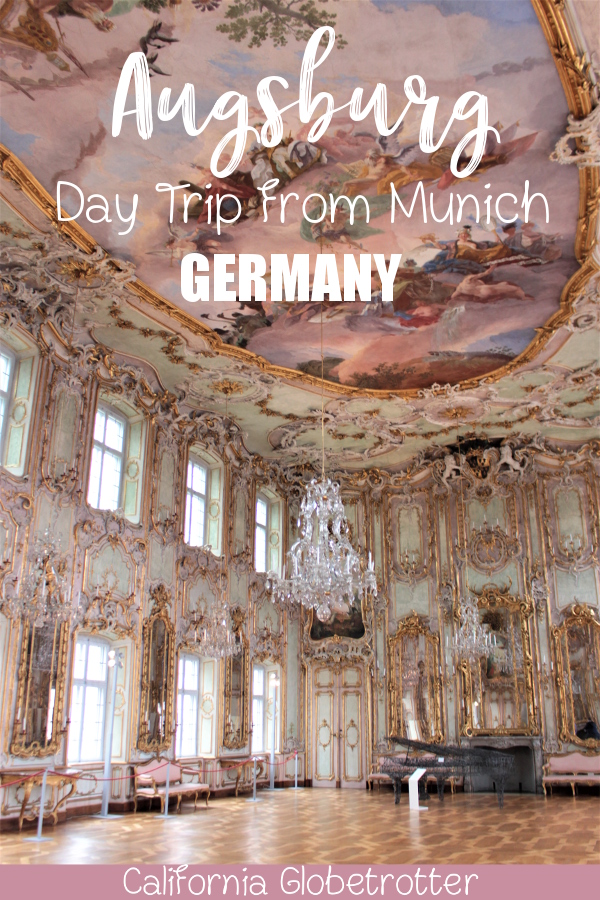
Augsburg Fountains
You’ll notice that along the “Imperial Mile’ on Maximilianstrasse there are several exquisite water fountains.
The Hercules Fountain, a 16th century piece of work by Adriaen de Vries. The fountain depicts Hercules, the son of Zeus, father of the gods, slaying a water serpent, Hydra, with a firebrand. The gold relief between the bronze figures is a reference to the city’s goddess Augusta and the goddess of Rome which references Augsburg’s power as a Free Imperial City.


St. Ulrich Church
What you see before you at the southern end of Maximilianstrasse is the combined silhouette of both St. Ulrich’s and St. Afra’s Abbey which is one of Augsburg’s iconic sights which have been close neighbors for hundreds of years, one Catholic, one Protestant.

It was once one of 40 self-ruling imperial abbeys of the Holy Roman Empire. In 1802, like many other abbeys and churches throughout Bavaria, it was dissolved during the Secularization of Bavaria. It’s worth a look inside as it has beautiful iron works throughout the entire church.
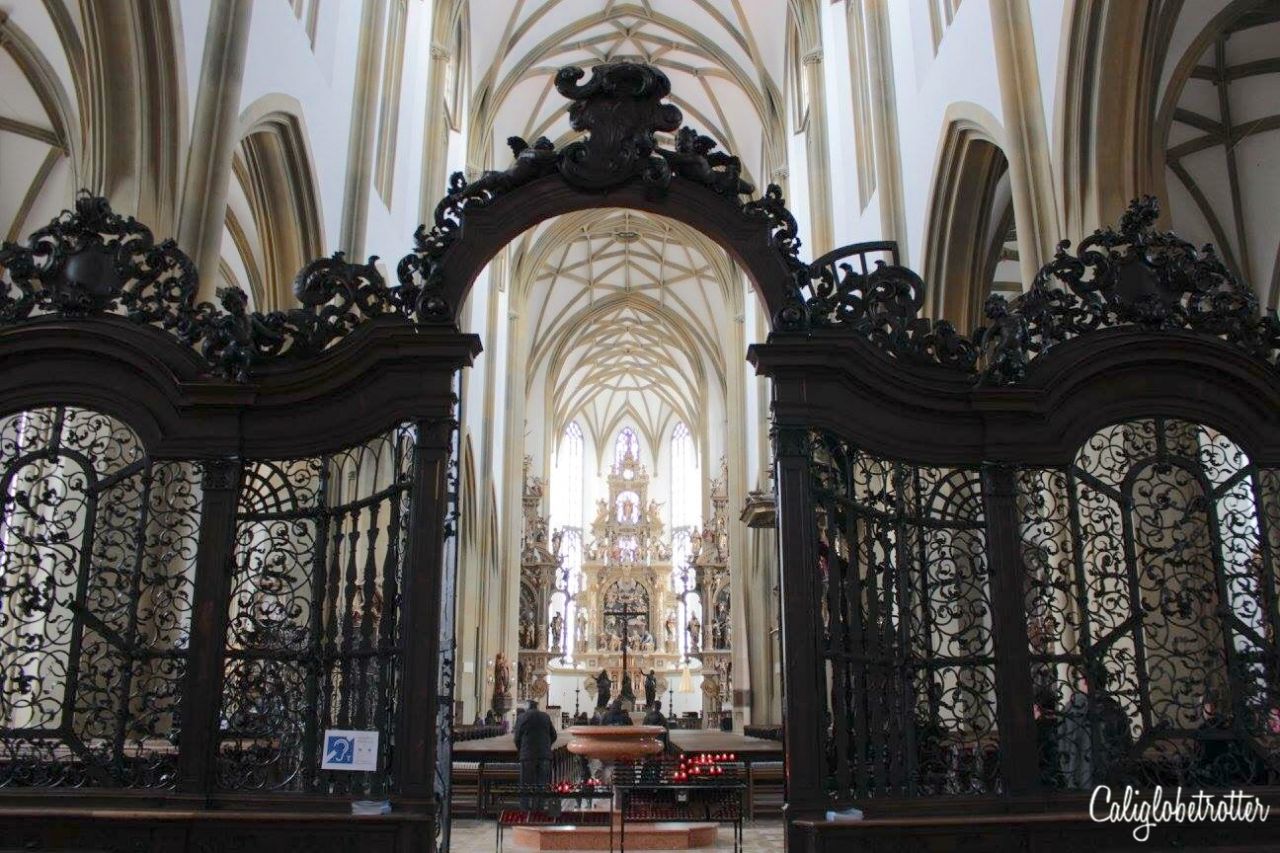
Opening Times: Summer – 11am – 4:30pm, Winter – 11am-12:30pm, 2-4pm

Augsburg’s Puppenkiste & the Red Gate
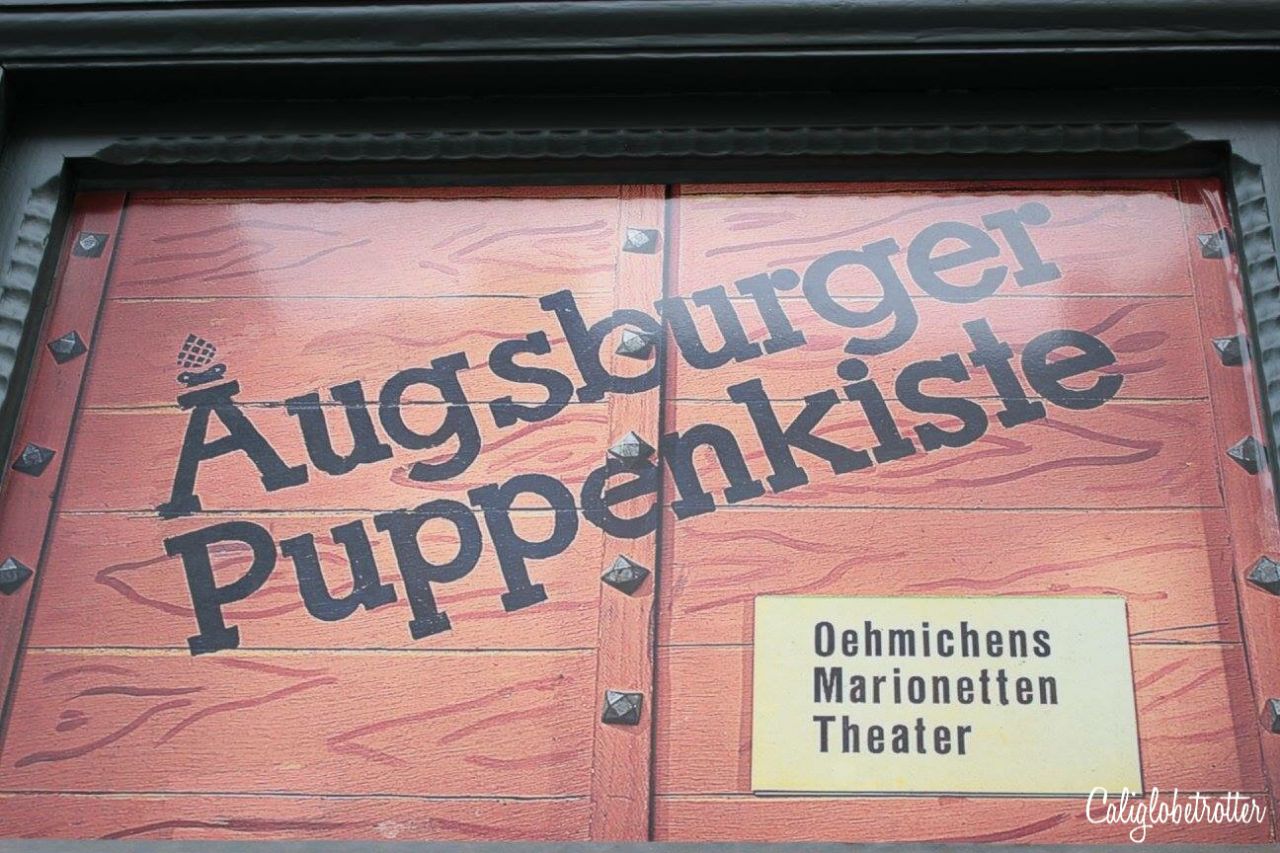
Augsburg’s most famous attraction is without a doubt, the Puppenkiste, a marionette theater dating back to 1948 and located in the former Heilig-Geist-Spital, next to the Rotestor (Red Gate). Beloved by Germans, especially children for their theatrical adaptions of fairy tales gained prominence nationwide when they began televising Jim Knopf und Lukas der Lokomotivführer and Urmel aus dem Eis. As a non-native living in Germany, I had sadly never heard of these productions before.
If you’re interested in watching a show, you must order your tickets a few weeks in advance, as it’s quite popular. Otherwise, you could try to simply ask if you can quickly see the theater.
The Rotestor is one of five gates along portions of the city wall that still surround the town and was once the main gate into the city. The others are Fischertor, Jakobertor, Vogeltor oder das Wertachbruckertor. Unfortunately, I discovered too late that there is an entrance at Fischertor to casually walk part of the wall.
Puppenkiste Museum Opening Times: Tuesday to Sunday 10am – 7pm
Buy Tickets here: Augsburger Puppenkiste
Lunch at Zum Bayerischen Herzl
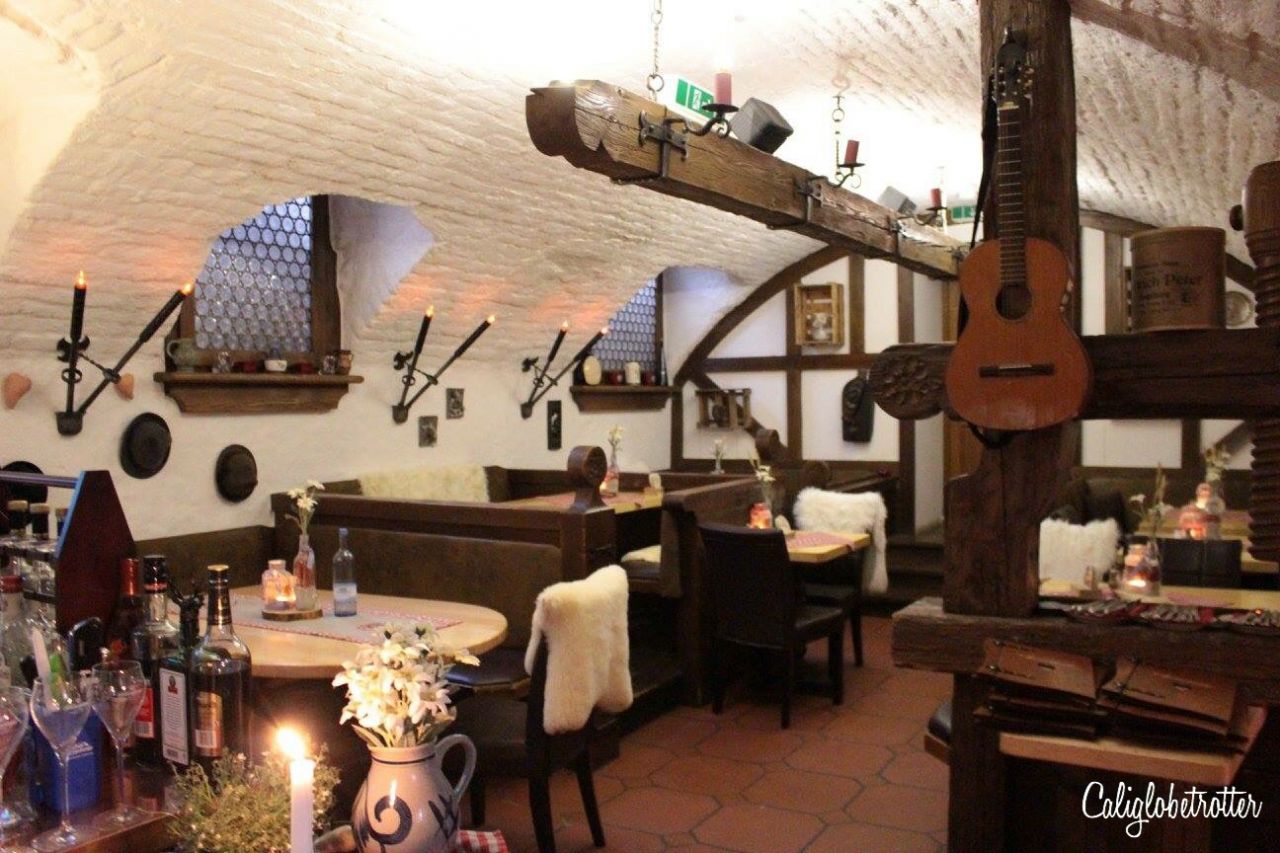
As we were walking from the Puppenkiste in the direction of the Fuggerei, along Spitalgasse, we happened to stumble upon a very traditional, medieval-style Bavarian restaurant when I suddenly spotted some beautiful “Street Art”. (I always joke that Street Art was popular in Germany before Street Art was popular).
We walked a bit further into the courtyard and soon discovered it was actually a restaurant, which has the only wood burning stove in Augsburg and the restaurant was located down in the cellar. If you’re looking for a traditional style Bavarian meal, this is the place to come.
Address: Spitalgasse 8, 86150 Augsburg
Website: Zum Bayerischen Herzl
The Fuggerei
Today one of Augsburgs most famous attractions, The Fuggerei, founded by Jacob Fugger in 1516, it is Europe’s oldest social housing estate. Jacob II Fugger, “the Rich”, was a member of the wealthiest family in all of Europe as they had the most successful trading company in the world at that time, stretching from Europe to places in India, Africa, South & Central America.


The Fuggerei was created to provide homes to the towns poorest citizens, mostly for families with children and is “a town within a town”. There are 52 houses within the complex, one of which included the home of Wolfgang Amadeus Mozart’s great grandfather (House no. 14). Today, 150 residents pay an annual rent (excluding heating) of a mere .88 cents and three prayers throughout the day to the Fugger family and its founder.
During the Second World War, it was destroyed during the bombing of Augsburg. Today, a former bunker is now open to the public as a museum to the history of the Fuggerei during and after the war.

Opening Times:
- April – September: 8am – 8pm
- October – March: 9am – 6pm
Price: Adults 4 €, Children 2 €
The Augsburger Cathedral

The Mariä Heimsuchung Cathedral is located at the northern end of the town and is the largest and most important church in Augsburg. Founded in the 11th century, it is a combination of both Romanesque and Gothic architecture. Inside, you will find some unique stained-glass windows, but photography is not allowed inside, unless for personal use only. You’ll also see several nuns walking around!
Opening Times: 7am – 6pm daily
Overall Experience
Overall, Augsburg is a lovely town, bustling with lots of shops and cafes. The sights are beautiful and there is plenty to do. After a second visit during the summer and seeing how alive the city is with shoppers, cafe goers and tours, I found Augsburg to be much more interesting. I guess a little blue skies changes a lot! I found the history to be quite interesting and unique to many other towns in Germany. Nonetheless, Augsburg is a town to consider visiting at least once, if not for the shopping.
If you’re interested in visiting Germany and are looking for more information, I highly recommend using the DK Eyewitness Travel Guide! Without these guides, I would be lost! This is my travel Bible!
 |  |  |  |
Disclaimer: This post contains affiliate links. If you click on one and make a purchase, I might make a little extra spending money, at no extra cost to you. As always, all opinions are my own and these products/services have been found useful during our travels and come highly recommended to you from yours truly!
Day Trips from Augsburg:
The ULTIMATE List of Day Trips from Munich
The Historic Town of Regensburg
The ULTIMATE & COMPLETE Guide to the Romantic Road in Germany
Liked this post? PIN IT FOR LATER!!

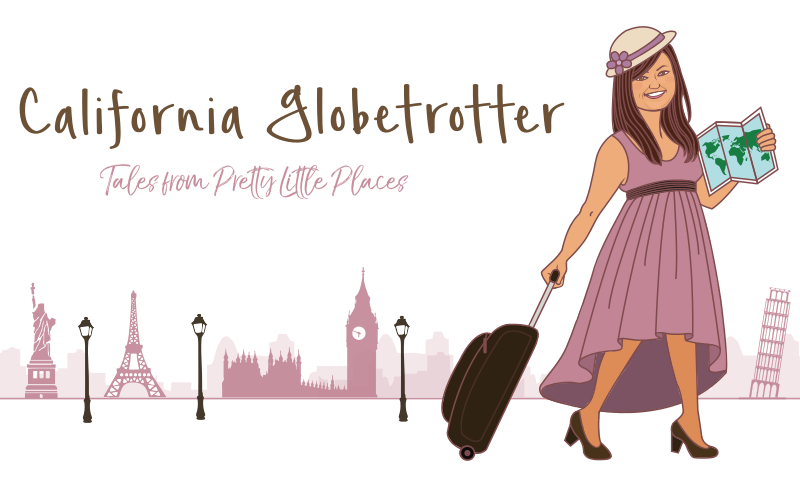
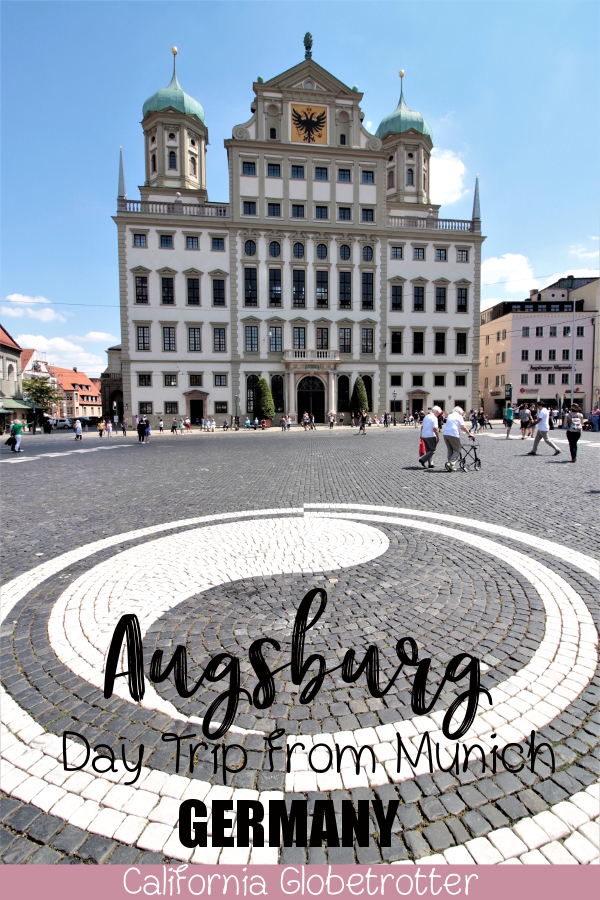

another beautiful Bavarian town:)
These places are so over the top inside they look like the would fit in if they were a part of the Palace of Versailles perfectly. I also can’t get over how cheap it is to get into these places!
Great Article! Thank you for your sharing!
I’ve been seeing your photos on Instagram and they are amazing! I’ve only been to a few cities in Bavaria, but it’s easily my favorite region in Germany!
Thanks for following along! I also enjoy your photos on IG! 🙂
Wow!! There’s so much gorgeous architecture there! I can’t get over how beautiful Bavaria is, both naturally and in its structures.
I love the ornate interiors of some of the buildings. They lay in stark contrast to the rebuilt St. Moritz church with its white interior. It looks like a blank canvas waiting for an artist.
I felt that way too, waiting for someone to come and make their magic on its walls!
Augsburg looks gorgeous. We haven’t been yet, but we will. Thanks for sharing with the #wkendtravelinspiration!
Where’s the half timbered houses? I’ve actually heard of Augsburg but it may have just been I saw it on a map before. The Weberhaus looks so cool, that patchwork paint job is super unique. A nice mix of history and urban it seems, I like! #wkendtravelinspiration
Haha sadly no half-timbered here 🙁 It wasn’t the prettiest city I had ever been to!
Such a wonderful information. It’s really a very good blog.
Thank you!!
Such a wonder post. I am planning to visit Munich sometime later this year, I will definitely visit Augsburg. I loved the Baroque Palace. #citytripping
Oh awesome! It’s an easy day trip!
The interior of Schaezlerpalais is very pretty! #citytripping
Looks like a beautiful place! I must say I’ve never heard of it before so thanks for the introduction and detail on what there is to see. The Golden Hall only looks worth visiting! Thanks for linking #citytripping
Incredible how these little known towns can have such impressive architecture. I love the church and wow, the inside of the palace! We loved this part of Germany and it seems we only touched the surface.
#citytripping